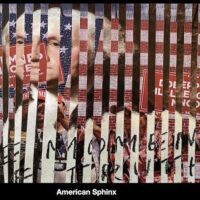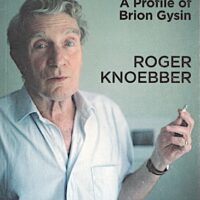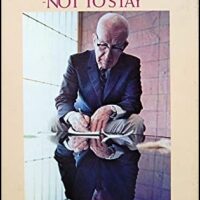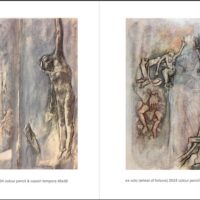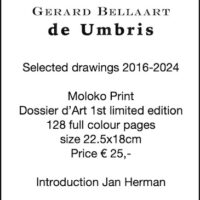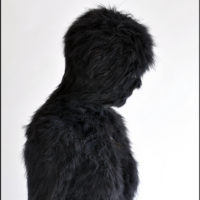As part of the Beat Hotel crowd in Paris during the late-1950s and early ’60s, Sinclair Beiles collaborated on the first book of avant-garde cut-ups, “Minutes to Go,” with Brion Gysin, William Burroughs, and Gregory Corso. While working at Maurice Girodias’s Paris-based Olympia Press, he was a key editor who helped shepherd Burroughs’s “Naked Lunch” into print. It is his incandescent poetry, however, for which he should be most remembered. But despite praise for his poetry from such luminaries as Burroughs and Leonard Cohen, his writing has rarely surfaced outside the small-press literary world. “Catastrophes Choisies” is not Beiles’s first poetry collection to appear in French, but it is the most elaborate..
New in French Translation
Bringing It All Back Home
She gave Zeus a headache … which he deserved.
Poem Without a Hero
You spoke in biblical flourishes,
assailed others with a rhetoric
deadlier than the barrel of a gun.
When you pulled the trigger,
your power overwhelmed
what lesser men most fear —
the death of all and everything.
When Words Fail, a Cut-Up Will Do
What else is there to say?
The Once and Future Prez
aaaaarrrrrffffff !!!!!!
Once Again, What Would Daumier Make of Trump?
Honoré Daumier went to prison for six months for his 1831 lithograph after its publication in a satirical illustrated periodical that appeared weekly in Paris, “La Caricature morale, politique et littéraire.”.
American Sphinx
No words needed.
The Late Brion Gysin (1916-1986) Is Having a Moment
Over the years he had many, in fact, although few of them lived up to his expectations. But never mind. An updated model of his and Ian Sommerville’s Dreamachine was recently featured in a symposium on art, AI, and the humanities here in New York; and another will be installed in London at the Tate Modern, in the exhibition “Electric Dreams: Art and Technology Before the Internet,”which will run from the end of this month (Nov. 28) to June 1, 2025. Meanwhile, Roger Knoebber has brought Gysin back to life in a shaggy, unconventional book-length profile, “Hysteresis.”
Buckminster Fuller’s Versified Prose
By my philosophy
The finite, but imponderable
Metaphysical Universe
Embraces the definite,
Ponderable, physical Universe.
‘Finite’ is not unitarily conceptual.
‘Definite’ is unitarily conceptual.
I have mathematical proof …
What Next, Trump Shoelaces?
I see that the Prez-elect is hawking guitars, his latest grift. (No indication of where they’re made.) So how about shoelaces? Very strong. Easily knotted. Made in China. Only 2 cents each, pre-tariff.
This item has been updated.
Does the Dreamachine Elude AI? Yes It Does.
Scholars and specialists addressed ethical and political considerations surrounding AI in collaborations with human creators. Topics ranged from AI aesthetics to the early history of machine learning, from multimedia art to computational research experiments with artificial intelligence, including AI biases and applications.
Fools, Fanatics, and Flunkeys
“The dodo bird cheered, swaggered, and strutted away.”
‘The Hanging’ and ‘Wheel of Fortune’
These drawings, which appear in “di Umbris,” a dossier of Gerard Bellaart drawings just published by Moloko, were not intended as commentary on current events. But I can’t shake the sensation that they are.
Will the ‘Four Freedoms’ Go the Way of the Dodo Bird?
The Bible gave us the Ten Commandments. The Constitution gave us the first 10 amendments, our Bill of Rights. Franklin Delano Roosevelt gave us the ‘Four Freedoms,’ chiseled in stone at the tip of Roosevelt Island as a monumental reminder of his legacy. Will the monument be all that’s left of his legacy?
David Erdos: ‘The United Hates of America’
You can be sure his poem will not be read at the Orange Turd’s coronation.
Human Figuration as an Expression of Ideas
These drawings move across centuries, from the Middle Ages to our blighted times in an unflinching rawness that gives no comfort. Nothing is omitted. You will find the sexual inscribed like watermarks of passion and anguish. The demonic appears in equal measure with the angelic. Most of all, not unlike cave drawings of prehistoric times, they are an existential record of a particular creature, Bellaart by name.
‘What Is There to Frighten Us?’
the world’s condition
was never intended
to forego the pleasure
of a passing hope


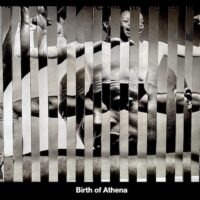

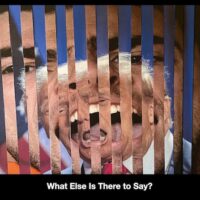
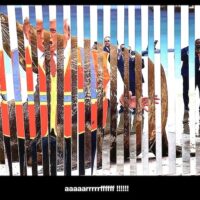
![Lithograph by Honoré Daumier [1831]](https://www.artsjournal.com/herman/wp/wp-content/uploads/2018/04/daumier_honore_1-200x200.jpg)
